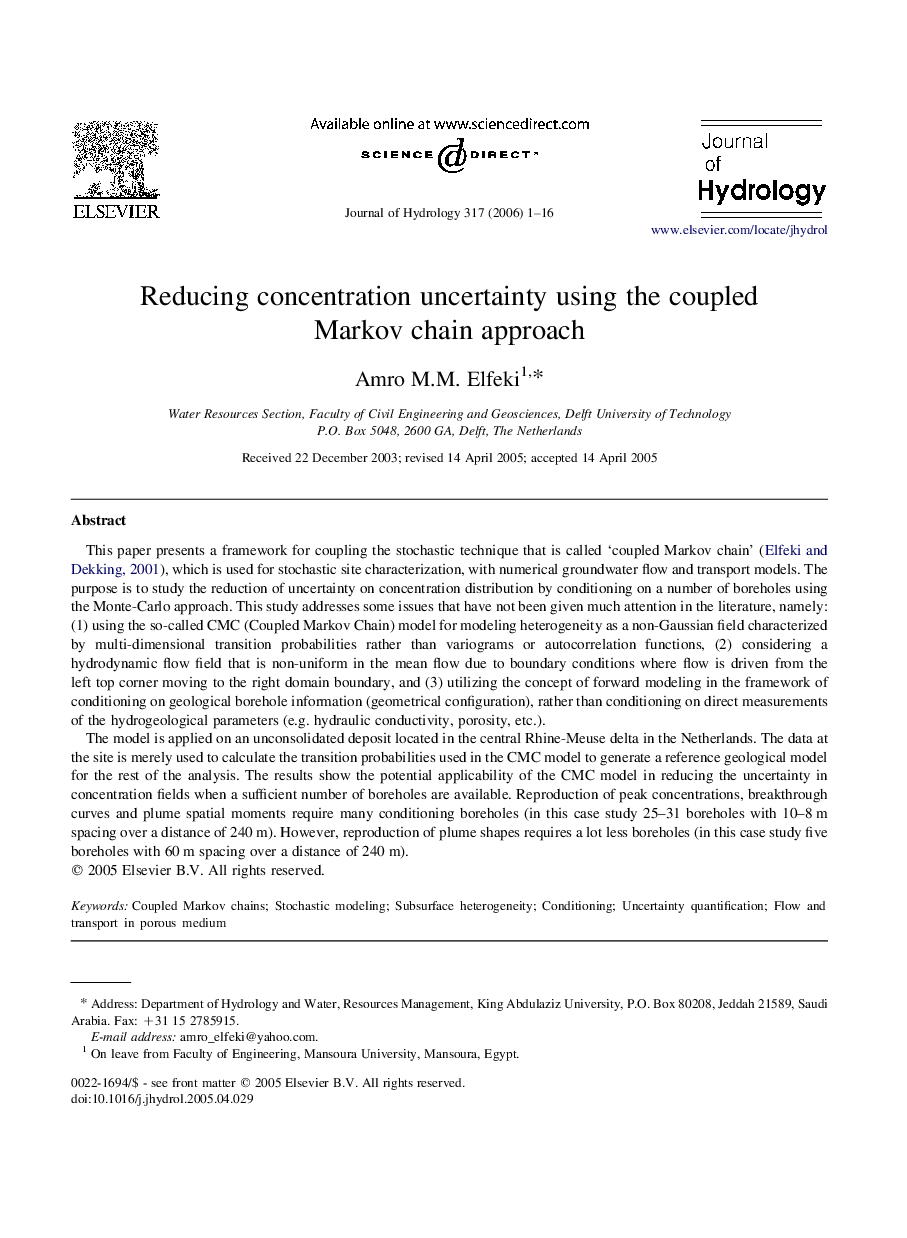| کد مقاله | کد نشریه | سال انتشار | مقاله انگلیسی | نسخه تمام متن |
|---|---|---|---|---|
| 4580712 | 1630173 | 2006 | 16 صفحه PDF | دانلود رایگان |

This paper presents a framework for coupling the stochastic technique that is called ‘coupled Markov chain’ (Elfeki and Dekking, 2001), which is used for stochastic site characterization, with numerical groundwater flow and transport models. The purpose is to study the reduction of uncertainty on concentration distribution by conditioning on a number of boreholes using the Monte-Carlo approach. This study addresses some issues that have not been given much attention in the literature, namely: (1) using the so-called CMC (Coupled Markov Chain) model for modeling heterogeneity as a non-Gaussian field characterized by multi-dimensional transition probabilities rather than variograms or autocorrelation functions, (2) considering a hydrodynamic flow field that is non-uniform in the mean flow due to boundary conditions where flow is driven from the left top corner moving to the right domain boundary, and (3) utilizing the concept of forward modeling in the framework of conditioning on geological borehole information (geometrical configuration), rather than conditioning on direct measurements of the hydrogeological parameters (e.g. hydraulic conductivity, porosity, etc.).The model is applied on an unconsolidated deposit located in the central Rhine-Meuse delta in the Netherlands. The data at the site is merely used to calculate the transition probabilities used in the CMC model to generate a reference geological model for the rest of the analysis. The results show the potential applicability of the CMC model in reducing the uncertainty in concentration fields when a sufficient number of boreholes are available. Reproduction of peak concentrations, breakthrough curves and plume spatial moments require many conditioning boreholes (in this case study 25–31 boreholes with 10–8 m spacing over a distance of 240 m). However, reproduction of plume shapes requires a lot less boreholes (in this case study five boreholes with 60 m spacing over a distance of 240 m).
Journal: Journal of Hydrology - Volume 317, Issues 1–2, 5 February 2006, Pages 1–16